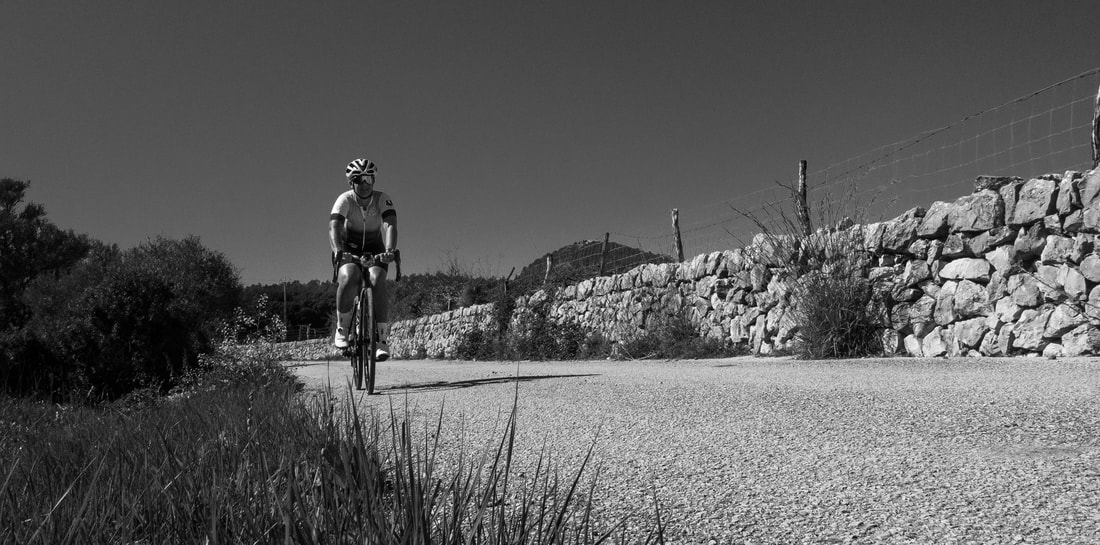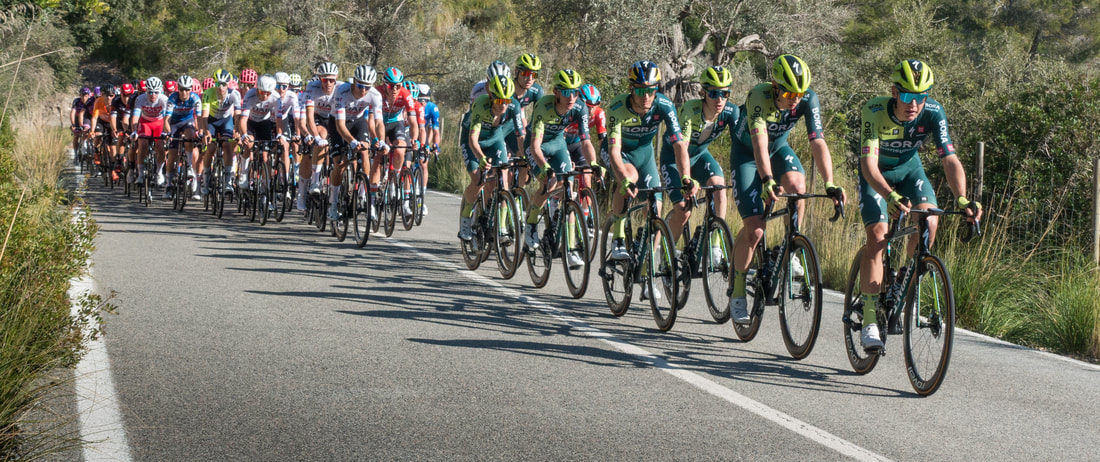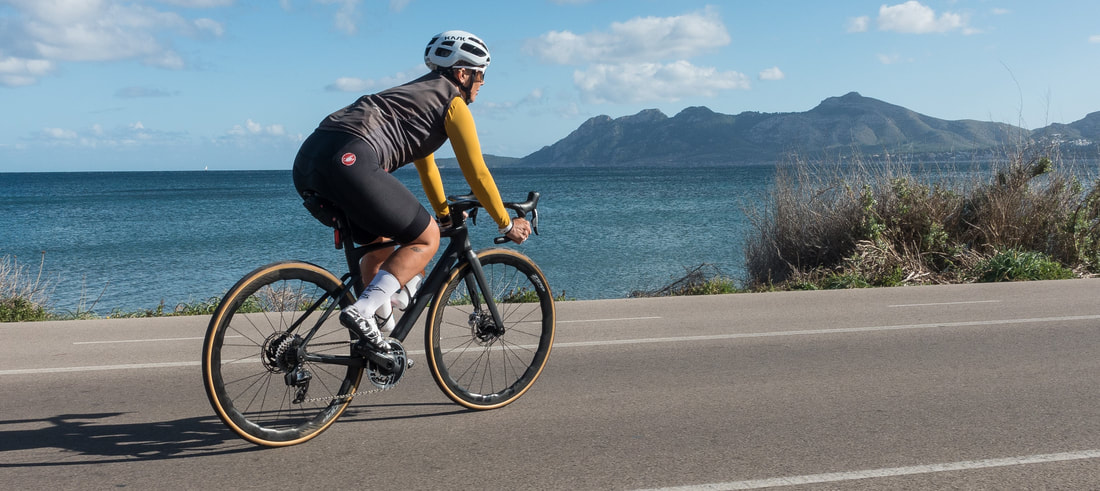|
There has been a lot of noise in the cycling media about training at 'Zone 2'. Inspired by a question from one of my riders (thank you Rich) I thought I'd have a dig around to find out what all the fuss was about. This is what I discovered. Take away messages
Introduction It makes sense to trust the training methods we know work, so novel approaches or new framings of existing training protocols should be welcomed but examined with a critical eye. Accordingly we should be rightly cautious about claims of efficacy of the latest training fad or the promise of quick fixes if they’re being sold without good evidence. Recently there has been a repackaging of ‘Zone 2’ training as all that is needed for race winning fitness. With training advice awash with ‘bro science’ this is, as you might expect, bollocks. Tadej Pogačar’s coach, Iñigo San Millán’s message about the importance of Zone 2 training has been widely misinterpreted and misapplied. Whilst it is tempting to believe race winning performance emerges from a few hours of relatively easy riding measured by conversational breathing, it does not. However, Zone 2 is a vital component of a training mix to develop fitness but the nuance of the message has been lost. This piece will therefore address
Why the big fuss about Zone 2? Most of those involved in endurance training understand the value of longer endurance rides at relatively moderate intensities. Amassing base miles as part of periodised training over the colder months as preparation for cycling or racing in the warmer ones is not new so why the fuss now?
Defining Zone 2 – Intensity How Zone 2 is defined depends on what is used to measure it. The ‘San Millán’ definition of Zone 2 When interviewed San Millán defines Zone 2 intensity with reference to breathing, training whilst being able to hold a conversation or breathing through the nose. This is a very broad ‘measurement’ open to interpretation depending, amongst other things, on the nature of the conversation and the size of the nose. However, San Millán agreed with a question put to him by Dr Peter Attia that 70-80% Max heart rate is probably about right. Zone 2 power Andy Coggan (in Training and Racing with a Power Meter) who developed power zones based on a measure of Functional Threshold Power, defines Zone 2 as 56 – 75% of FTP. Joe Friel (in The Power Meter Handbook) says the same. Interestingly, Training Peaks rounds this up to 60-80% of FTP which, at the top end makes quite a difference, and Zwift in their Blue Zone 2, call it 60-75% of FTP. Level 2 heart rate Peter Keen who worked with British Cycling and Chris Boardman in the 1990s who pioneered heart rate and power measurement for cyclists defines Level 2 heart rate as 70-80% of max HR. This aligns with Dr Stephen Seiler’s Green Zone training which suggests an intensity not exceeding 80% of max heart rate. Lactate threshold There are 28 different definitions of lactate threshold and it’s not something that can be routinely monitored outside of the lab although, as you can imagine, a ‘wearable’ is being developed. For our purposes, the body will clear the lactate it generates at an intensity below 80% of max HR. Fundamentally, this is steady state riding and, for our purposes Zone 2. In summary, in my mind at least, San Millán’s breathing/metabolic measured approach translates better to heart rate (an effort metric) than power (an output metric) and his Zone 2 does seem to equate broadly to 70-80% of max HR. The distinction between power and heart rate measurement is important because they do not equate. Zone 2 power is less intense than Level 2 heart rate. The distinction between power and heart rate measurement is important because they do not equate. Zone 2 power is less intense than Level 2 heart rate. Defining Zone 2 – Duration Using power as a metric, it’s unlikely you’ll find cycling coaching advice that recommends more than 6 hours at the bottom end of the zone 2 in one single session or more than 4 hours at the top. The possible exception being Ironman distance related. Boardman reckoned he would spend no more than 2 hours at an intensity of 70-80% of max HR at any point. However, all training is on a curve and the lower the intensity, the greater the potential duration and vice versa. San Millan talks about rides of 90mins or so in duration being effective which indicates to me Zone 2 based on power measurement is likely to be too easy to match his definition. For practical purposes, rides of less than an hour are likely to be too short, more than 4 hours and it’ll drift into Zone 1. It seems to me durations of 60 mins to 2 hours in Zone 2 measured by heart rate, breathing (should you wish to try that approach) or power at 70-85% of FTP is an effective time frame. Defining Zone 2 – Frequency San Millán talks about riding at his Zone 2 for between 2 to 4 days a week. 2 days a week in the cycling season (on the assumption racing or events are happening) and 4 days a week during the training phases of the year. This is a repackage of the 80/20 rule. A 5 hour training week would break down to 4 hours Zone 2 and 1 hour at higher intensities. The intense hour may itself break down to 80% Zone 2 (warm up, cool down and rest periods) with 20% at Zone 5 during interval training. This makes sense but is nothing new. The 80/20 principal is tried, tested and effective. Most balanced training programs allowing time for recovery and ‘real life’ will broadly fit into this healthy mix. What Zone 2 training does, and doesn’t do At its core it’s bike riding and is essential for all those adaptions, muscular, metabolic, cardiovascular, technical, tactical and psychological on which high performance is based. It’s base miles and you can’t build high performance race winning intensity without it. However, there are some misleading claims about what it else Zone 2 does.
How Zone 2 training is implemented and measured When asked ‘how much should I do?’ San Millan is cautious, with good reason, about being too specific on intensity, duration and frequency. Of course, each athlete is different so maybe it’s an impossible question, but it also maintains an air of mystery. Bringing together what I’ve heard him say about intensity, duration and frequency, it boils down to 2 to 4 days per week at 90 mins per session with conversational breathing as a measure of intensity. In fairness to him, I think this is about as close as you can get to saying something helpful and it's more informative than 'it depends on the individual'. However, it raises as many questions as it answers about how precisely it should be applied. Conclusion For what it’s worth, I think San Millán’s Zone 2 definition equates broadly to 70 - 80% max HR. This is a really effective training zone and, however measured, we definitely need a proportion of it and 80/20 is not a bad starting point for mapping frequency and duration. Precisely how much, when and how often is going to depend on the goals and physiology of the individual rider. Whilst it might sound like pedantry, the subtle differences are important to get the benefits of training at Zone 2. Undercut it and it’s ‘junk miles’, overdo it and it risks over training and fatigue. Heart rate and power zones don’t match well but, using power as the measure, I think it equates better to 70-85% rather than the standard parameters of 56 to 75% of FTP. This is over the mid-point of Zone 2 power potentially merging into sweetspot (88% FTP) for a duration for 60mins. For rides up to 2 hours in duration 70% of FTP feels about right. Heart rate and power measurement used in tandem provide powerful metrics so try it and see? Do a 20 minute warm up and an hour at 70-80% max heart rate and see what Normalised Power is produced. Also, see how it feels and be conscious of your breathing - it's not easy riding. If you’ve fought your way through all this (well done and thanks) and have come to a big ‘so what?’ that’s pretty much where I got to too. To get fitter, doing a proportion of training at Zone 2 is great advice but it’s nothing new. That it needs to be programmed carefully and sustainably in combination with more intense work should come as no surprise either. Good old Zone 2 has just had a glow up, it’s been framed with a little mystery and accelerated with a sprinkling of celebrity stardust. The risk is that it is misinterpreted as it’s all that’s needed to generate high performance. I don’t think Tadej Pogačar is getting race fit with 6 hours a week riding whilst chatting and his coach does not make this claim. However, the power of his message and its attachment to Pogačar has become amplified by celebrity and distorted by influencers. Rich Smith is a psychology graduate and a British Cycling qualified Level 3 Road and TT coach supporting riders nationally and internationally. He is coach to the Great Britain Transplant Cycling team and launched RideFast Coaching in 2015 to provide physiologically effective and psychologically sustainable training to riders at all levels.
1 Comment
Rich Frasier
3/30/2024 09:03:42 pm
A great write-up. I kind feel like someone just told me there’s no Santa Claus. It’s funny how we’re kind of wired to hope for simple, easy solutions. But life seems to teach us over and over that there’s no way to get where we’re going without putting in the difficult work. Back onto the trainer!
Reply
Leave a Reply. |
AuthorThe ramblings of a cycling coach... Archives
May 2024
Categories |
|
© COPYRIGHT 2022. ALL RIGHTS RESERVED.
|



 RSS Feed
RSS Feed
